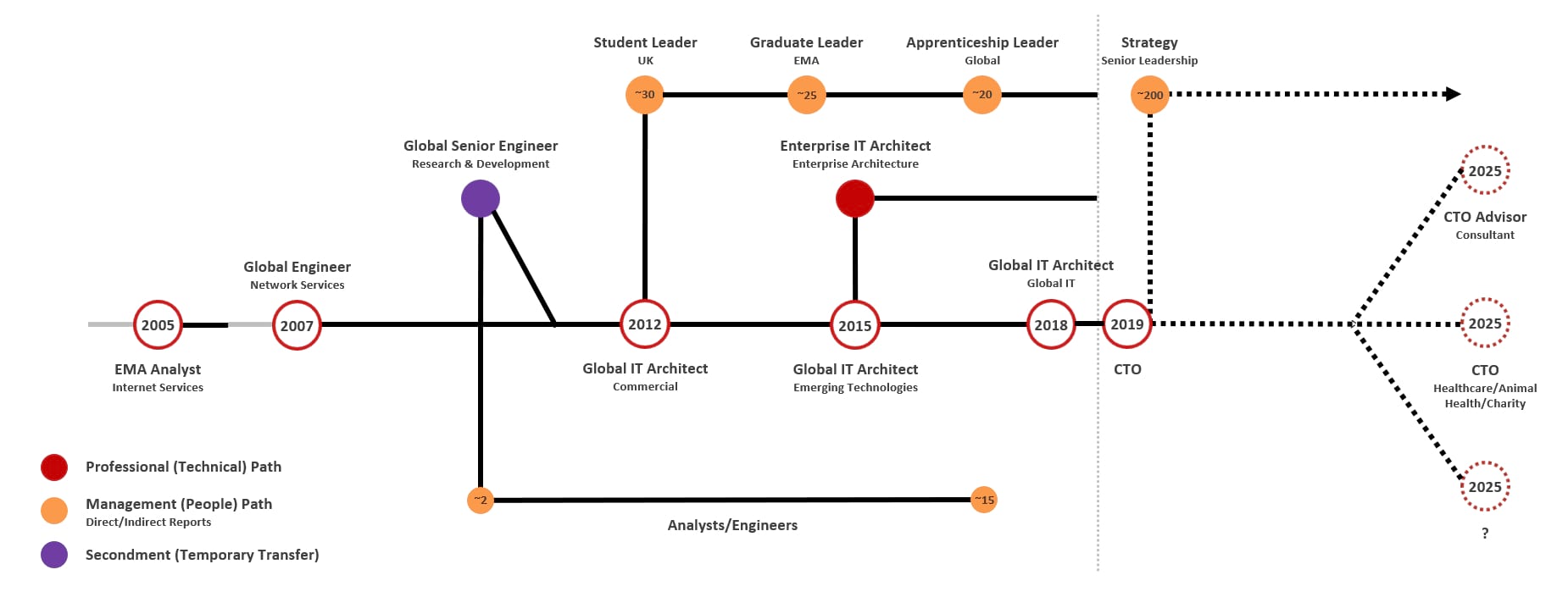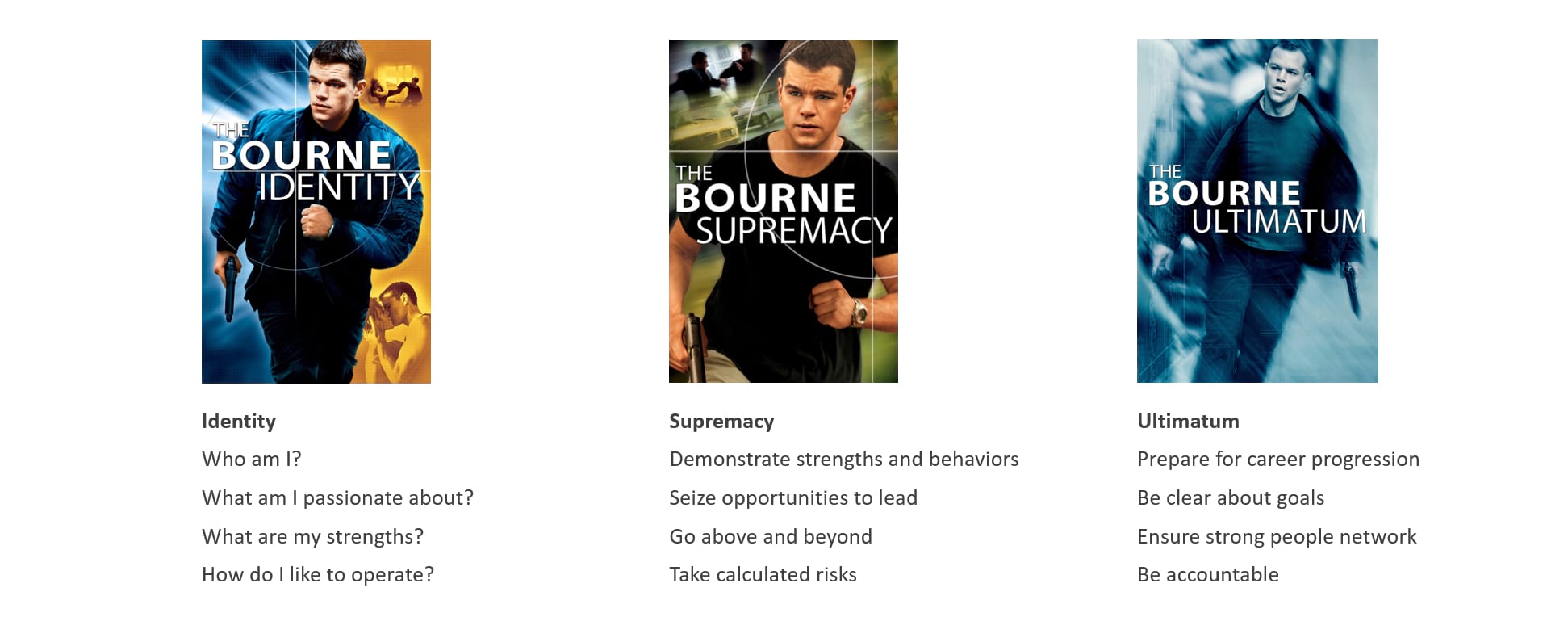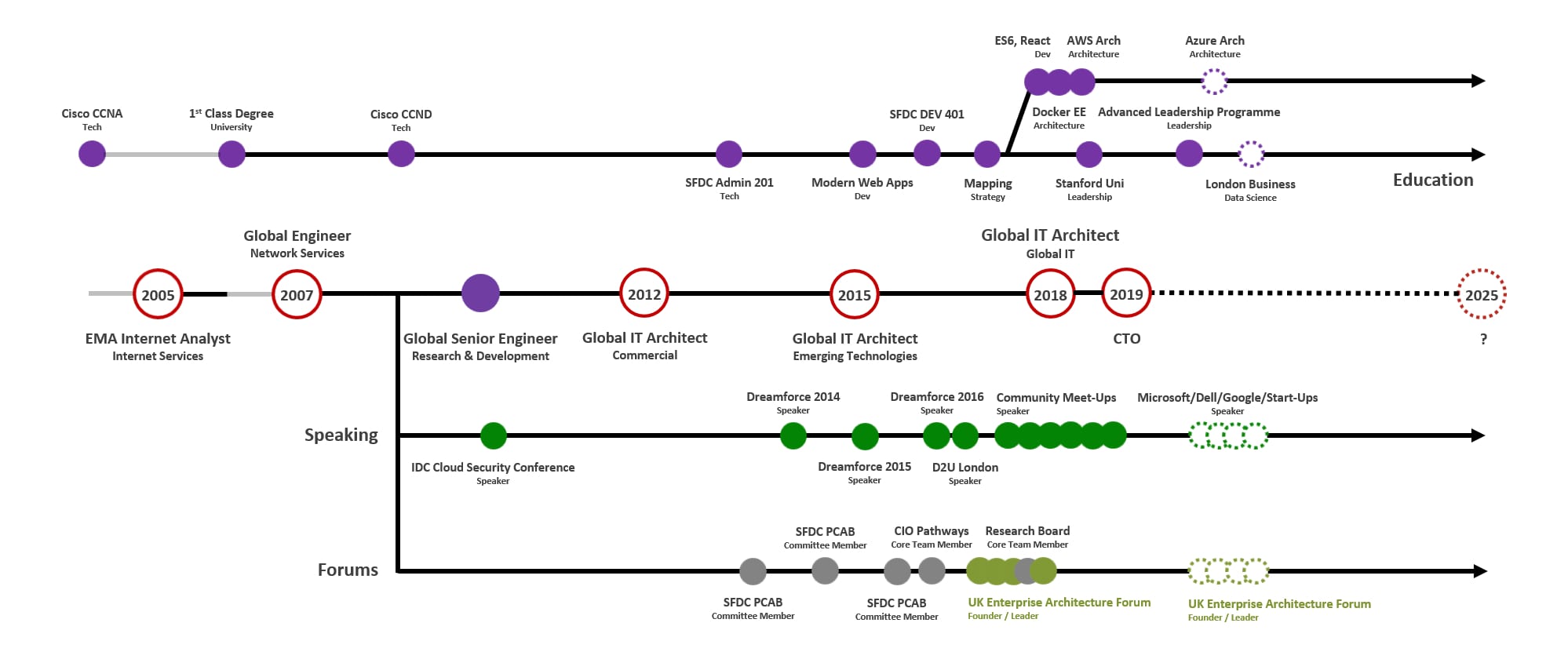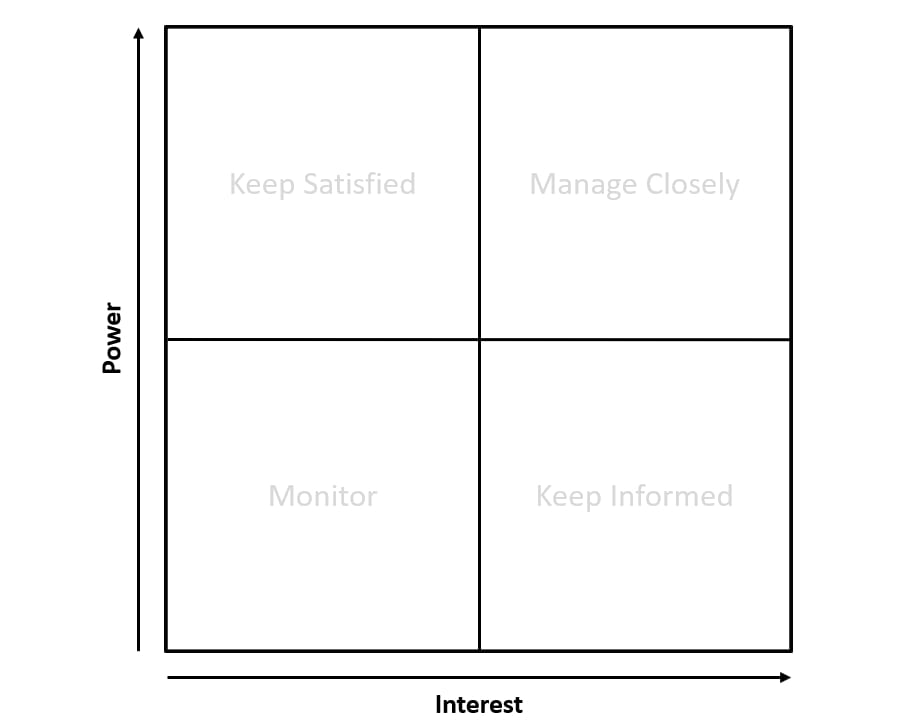Career Planning
In September, I transitioned from my role as an Enterprise IT Architect to Chief Technology Officer (CTO). This change marked a major milestone in my career, something I had been working towards for over a decade.
This article highlights my approach to career planning, covering the high-level methodology and some key techniques.
As a general rule, embracing stoic philosophy, I attempt to identify, prioritise, and own the choices that are clearly within my direct control, whilst accepting external events that are beyond my direct control.
This mindset has been important throughout my career, helping me to prioritise actions that can contribute to a positive outcome, disregarding external factors that are impossible to change or avoid.
It should be noted that this approach can be perceived as lacking empathy, as acceptance, without context, can appear “heartless”. However, I believe focus and discipline are key behaviours that promote success, recognising that external events are a common distraction that can derail progression towards a specific goal.
With this in mind, I consider my career a strategy, which must be effectively planned and methodically executed. To help, I have defined a simple five-step career planning methodology.
- Mission Statement
- North Star
- Career Plan
- Education Plan
- Community Network
This article will cover each step, providing examples from my career.
It is important to note that every career plan is unique to the individual and the methodology described in this article compliments my style and therefore may not resonate with everyone.
Mission Statement
A mission statement is a formal summary of the aims and values of a company, organisation, or individual.
As with any strategy, I believe it is critical to establish a clear outcome. In the context of career planning, a mission statement can help establish your personal brand, whilst communicating your purpose.
For example, my mission statement reads:
Apply technology to improve the wellbeing of people and our planet.
There is no right or wrong answer when defining a mission statement. However, I believe it should focus on an area of passion, which will encourage resilience and perseverance during times of stress and/or hardship. For example, my mission statement attempts to articulate three points:
- I am passionate about “technology”.
- I am passionate about how to “apply” technology, not invent/create it.
- I am passionate about health and “wellbeing”, specifically people and our planet.
I use my mission statement as an anchor to ground my career, ensuring I stay true to my passion area and purpose.
North Star
With a mission statement established, identifying a position/role that best supports the outcomes of the mission statement can help solidify the direction.
For me, that would be a position/role that includes the highest level of influence and accountability over key decisions, however, this might not be desired by everyone. For example, not everyone desires a leadership position, which is perfectly acceptable.
It was this reflection, over a decade ago, that led me to the role of Chief Technology Officer (CTO), ideally, as part of an organisation focused on the wellbeing of people and our planet.
In addition to the position/role, establishing a set of principles can help provide scope to your career plan, serving as guardrails or system of belief (e.g. morals, ethics, etc.)
At a minimum, these principles should cover five key areas.
- Self (Physical/Mental Health)
- Family (Parents, Children, etc.)
- Friends
- Social (Work/Life Balance)
- Financials (Commitments, Protections, etc.)
The principles should describe ideals, which can be malleable and (in certain scenarios) even compromised, but should stay ultimately true for sustained personal wellbeing. For example, if you have goals related to family, these must be protected/balanced alongside your career.
Career Plan
Once a north star (position/role) and supporting principles have been defined, I document the expertise, experience and behaviours required by the target position/role. This can be subjective, especially if the position/role is not well defined, but still an important exercise to help plot a path forward.
The list outlined below includes a few example behaviours that I deem critical to be a successful Chief Technology Officer (CTO).
- Technical Depth and Breadth
- Business Context and Credibility
- Strategic Mindset
- Communications and Influence
- Proven Record of Enterprise Delivery
- Quality External Network
Once understood, you can start to chart a career plan, which could include multiple paths, roles, and organisations. It is also worth including any previous experience, as this can help highlight gaps and inform future decisions.
The goal is to construct a plan that incorporates opportunities that enable you to learn and demonstrate mastery of the previously defined expertise, experience and behaviours, always pushing towards your desired outcome (north star). The diagram below is an example of my career plan.

As you can see from the example, my career plan includes multiple milestones, which come in the form of new roles, short-term assignments and/or opportunities. Ideally, each should have a specific purpose, tangibly contributing towards your personal development.
To help support healthy progression throughout the career plan, I follow a simple methodology that I affectionately call “The Bourne Engagement”.
When starting something new, either a role, project, or a programme, I follow a three-phase engagement approach, which coincidently matches the titles of the popular Bourne series of movies. For example.

Starting with “Identity”, I believe it is critical, when starting something new, to spend time establishing a strong relationship with the team, whilst seeking to understand any relevant business context, and/or business politics/bureaucracy.
In theory, this approach helps to form a strong foundation, established in trust, whilst also ensuring the team has a clear understanding of your personal brand, areas of passion, etc.
Only once your identity has been established, you can transition to “Supremacy”, which is where you demonstrate your strengths and influence, seizing opportunities and positioning yourself as a high performer and thought leader.
Finally, with an established identity and sustained/consistent high-performance, you can transition to “Ultimatum”, where you prepare for career progression, through clear accountability and by leveraging your established credibility and people network.
Although slightly “cringe-worthy”, this three-phase approach has always served me well, regardless of situation or level. The speed at which you can transition through each phase is dependent on the specific scenario, but I would caution attempting to proceed too quickly, as trust and credibility can not be cheated, it requires “time in the trenches”.
Education Plan
In parallel to the career path, I also produce an education plan. It is easy to assume that formal education concludes at the end of school/college/university, but I believe it must be seen as a continuous process, especially when working in a fast-moving industry such as IT.
As with the career plan, the education plan should connect to the previously defined required expertise, experience and behaviours. It can be used to enrich and accelerate career progression, whilst also bringing a valuable “external perspective”, ensuring diversity of thought, which can be lost when working within a single organisation for a prolonged period.
Outlined below is an example of my education plan, which includes multiple channels, covering formal education, courses, conferences, speaking opportunities, etc.

Alongside the value of continuous learning, the education plan can help establish a strong external people network, which can act as a differentiator as you progress through your career.
I have found speaking at (not just attending) events (e.g. conferences, meet-ups, etc.) to be an excellent way to engage the community and establish external relationships.
Community Network
The final area formalises the importance of the people network. As it relates to career, there is certainly truth to the common saying “it’s not what you know, but who you know”, however, I would argue both are equally important.
With that said, a strong people network can help ensure your personal development is diverse and inclusive, whilst also revealing new opportunities that might otherwise be hidden. Therefore, I take time to establish and nurture a robust people network, supported by a simple stakeholder map.

The goal is to identify key individuals (internal to your organisation and external) that can support your personal development, aligned with your career plan and defined expertise, experience and behaviours. A stakeholder network can be quite large, which is why categorisation is useful, as it provides a simple framework to help coordinate engagement (type of engagement, frequency, etc.)
In parallel, key individuals should be positioned as formal mentors. A strong, trusted mentor can have a profound impact on your career, however, it is the mentee that must drive this value. For example, I identify mentors that can directly support my personal development, focusing the conversations on specific topics vs. generic chat.
As you progress in your career, the concept of a “reverse-mentor” becomes equally important, targetting an early career professional who can help provide a generational perspective, alongside future trends that may not be obvious in leadership positions.
In short, I consider a strong people network a critical asset that must be proactively maintained, with specific goals, to ensure the value is maximised.
Conclusion
As stated during the framing of this article, every career plan is unique to the individual and the methodology described in this article may not resonate with everyone.
Regardless of your approach, one thing is true, you must own your career! Therefore, be proactive, get organised and start working towards your personal outcome!